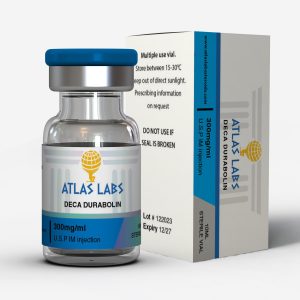SARMs vs Steroids, whats the difference? In recent years, SARMs (Selective Androgen Receptor Modulators) have gained a reputation as a “safer” alternative to anabolic steroids. They’re marketed as compounds that deliver muscle and strength gains without the heavy side effects. But how accurate is that claim, and how do SARMs really compare to traditional steroids? In this guide, we’ll break down the key differences, their benefits, risks, and whether one is truly better than the other.
What Are Steroids?
Anabolic steroids are synthetic versions of testosterone. They bind to androgen receptors throughout the body, increasing muscle protein synthesis, recovery, and performance. While highly effective, they also come with systemic side effects like liver strain, cardiovascular issues, and hormonal imbalances.
What Are SARMs?
SARMs are compounds designed to selectively target androgen receptors in muscle and bone tissue, while avoiding other areas like the liver, prostate, and skin. In theory, this makes them less likely to cause side effects such as hair loss, acne, or prostate issues. However, most SARMs remain under-researched and are often sold as “research chemicals,” raising concerns about purity and long-term safety.
Benefits of Steroids
Steroids have decades of documented use in bodybuilding and athletics. They deliver rapid muscle growth, dramatic strength increases, and predictable results depending on the compound chosen. Whether for bulking, cutting, or strength cycles, steroids remain unmatched in terms of sheer effectiveness.
Benefits of SARMs
SARMs appeal to those seeking milder results with fewer side effects. They don’t aromatize into estrogen, which reduces the risk of water retention and gynecomastia. Most are taken orally, which adds convenience, and early research suggests they may be less toxic to the liver than traditional orals.
Risks of Steroids
The side effects of steroids are well-documented. They suppress natural testosterone production, increase the risk of cardiovascular issues, and in the case of oral compounds, cause liver toxicity. Other side effects include acne, hair loss, mood swings, and estrogenic complications like gynecomastia.
Risks of SARMs
Although marketed as safer, SARMs still suppress natural testosterone and may require PCT afterward. Because they’re relatively new, long-term safety data is lacking. Many are sold in unregulated markets, meaning purity and dosing accuracy are questionable. Some users have also reported liver strain, despite claims of reduced toxicity.
Which Is Better?
For sheer results, steroids remain superior. They deliver more muscle, more strength, and faster transformations. However, for those worried about harsh side effects, SARMs can be appealing. They’re often seen as a “first step” into performance enhancement, though they’re far from side-effect free. Ultimately, the choice depends on goals, risk tolerance, and access to legitimate products.
FAQs
Do SARMs require PCT?
Yes. While SARMs are milder than steroids, they still suppress natural testosterone and typically require some form of Post Cycle Therapy.
Conclusion
SARMs vs Steroids, while both enhance performance, they do so with different levels of effectiveness and risk. Steroids are stronger and better studied, while SARMs offer a milder, less proven option. Neither is completely safe, and both carry consequences for hormonal health. If considering either path, research and caution are essential.
The information provided in this article is intended for educational and research purposes only. It does not constitute medical advice or a recommendation to use any substances discussed. Always consult with a licensed medical professional before beginning any supplement, peptide, or anabolic steroid protocol.
If you’re interested in exploring high-quality research compounds, you can browse our shop here.
